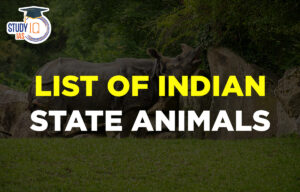Table of Contents
Context: Seven products from across India, including four from Rajasthan, were given the Geographical Indication (GI) tag by the Geographical Indications Registry in Chennai.
About GI Tag
- Definition: Geographical Indications of Goods are defined as that aspect of industrial property which refer to the geographical indication referring to a country or to a place situated as being the country or place of origin of that product.
- Typically, such a name conveys an assurance of quality and distinctiveness which is essentially attributable to the fact of its origin in that defined geographical locality, region or country.
- GI Tag in India: The Geographical Indications of Goods (Registration and Protection) Act seeks to provide for the registration and protection of Geographical Indications relating to goods in India.
- Governed By: Under Articles 1 (2) and 10 of the Paris Convention for the Protection of Industrial Property, geographical indications are covered as an element of IPRs.
- It is also covered under the Trade Related Aspects of Intellectual Property Rights (TRIPS) Agreement of WTO.
- Validity: This tag is valid for a period of 10 years following which it can be renewed.
- Significance: The Geographical Indication registration confers the following benefits:
- Legal protection to the products.
- Prevents unauthorized use of GI tag products by others.
- It helps consumers to get quality products of desired traits and is assured of authenticity.
- Promotes the economic prosperity of producers of GI tag goods by enhancing their demand in national and international markets.
Recent GI Tags
Jalesar Dhatu Shilp (Uttar Pradesh):
- This craft from Jalesar in Uttar Pradesh’s Etah district involves making decorative metal craft and brassware, including ghungrus (anklets) and ghantis (bells).
- The Thatheras community, residing in the Hathuras locality, is responsible for creating these beautiful metal products.

Goa Mankurad Mango (Goa):
- An enchanting Mango Variety from Goa, Goa Mankurad Mango, also referred to Goa Alphonso is a delightful mango variety grown in Goa.
- Due to its sweet taste, juicy pulp, thin skin, and pleasant aroma, it is regarded as one of the finest mango varieties in India.
- The mango’s name has an interesting historical background.
- Initially named “malcorada” by the Portuguese, which means ‘poor colored’ it later evolved into “mankurad aamo” (mango) in Konkani.

Goan Bebinca (Goa):
- Known as the ‘queen of Goan desserts,’ Bebinca is a traditional Indo-Portuguese pudding.
- It is a layered cake made with thin layers of flour, eggs, coconut milk, sugar, and ghee (clarified butter).
- After adding each layer, the cake is baked in an earthen oven, resulting in a rich and moist texture.

Udaipur Koftgari Metal Craft (Rajasthan):
- This traditional craft involves ornamenting weapons with intricate designs, gold and silver wire embedding, and polishing.
- The process results in exquisite and finely crafted metalware.

Bikaner Kashidakari Craft (Rajasthan):
- Traditional craftspeople from the Meghwal community in Bikaner and nearby districts create this craft on cotton, silk, or velvet.
- The intricate fine stitches and mirrorwork are mainly used for marriage-related objects and are believed to ward off the ‘evil eye.’

Jodhpur Bandhej Craft (Rajasthan):
- Known for its vibrant and colorful appeal, Bandhej is an ancient Rajasthani art of tying and dyeing textiles.
- The fabrics used for Bandhej are muslin, silk and voile.
- Cotton thread is used for tying the fabric.

Bikaner Usta Kala Craft (Rajasthan):
- Also known as gold nakashi or gold manauti work, this craft is characterized using untreated raw camel hide.
- The skilled Dapgar community of leather craftspeople meticulously process and mold the leather to create durable and golden-hued products.



 Daily Quiz 17 April 2025
Daily Quiz 17 April 2025
 Nilgiri Biosphere Reserve, Map, Climate,...
Nilgiri Biosphere Reserve, Map, Climate,...
 Complete List of Indian State Animals
Complete List of Indian State Animals





















